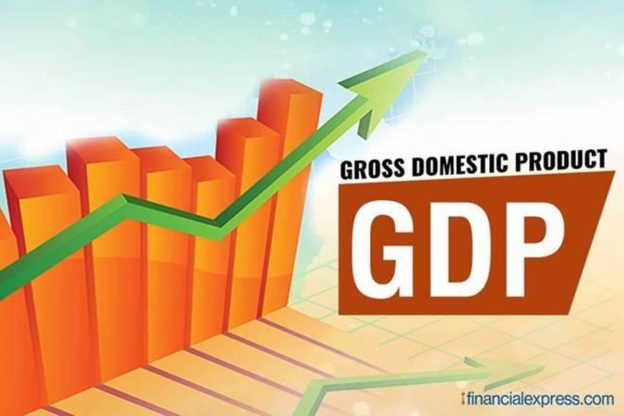India is expected to grow at 7.2 per cent in 2021 but economic growth could decelerate next year, according to a United Nations report. The report projects that India will clock an economic growth of 6.7 per cent in 2022, slower than the country’s expected 2021 growth rate.
UNITED NATIONS: India is expected to grow at 7.2 per cent in 2021 but economic growth could decelerate next year, according to a United Nations report which said the recovery in the country is constrained by the ongoing human and economic cost of the Covid-19 pandemic and the negative impact of food price inflation on private consumption.
The UNCTAD Trade and Development Report 2021, released here on Wednesday, sounded a cautiously optimistic note to say that the global economy is set for a strong recovery in 2021, albeit with a good deal of uncertainty clouding the details at the regional and country levels over the second half of the year.
After a 3.5 per cent fall in 2020, the United Nations Conference on Trade and Development (UNCTAD) expects world output to grow 5.3 per cent this year, partially recovering the ground lost in 2020.
The report said that India “suffered a contraction” of 7 per cent in 2020 and is expected to grow 7.2 per cent in 2021.
“The recovery in India is constrained by the ongoing human and economic cost of Covid-19, and the negative impact of food price inflation on private consumption,” the UNCTAD report said.
The report projects that India will clock an economic growth of 6.7 per cent in 2022, slower than the country’s expected 2021 growth rate.
However, even with a slower growth rate of 6.7 per cent, India will still be the fastest-growing major economy in the world next year.
“India, which experienced a contraction of 7.0 per cent in 2020, showed a strong quarterly growth of 1.9 per cent growth in the first quarter 2021, on the back of the momentum of the second half of 2020 and supported by government spending in goods and services,” the report said.
“Meanwhile, a severe and broadly unanticipated second wave of the pandemic, compounded by bottlenecks in the vaccine roll out, hit the country in the second quarter, on top of rising food and general price inflation, forcing widespread lockdowns and drastic consumption and investment adjustments,” it said.
It noted that income and wealth inequalities in the country have widened, and “social unrest has increased”.
The Central Bank estimates another sharp contraction (quarter-on-quarter) in the second quarter followed by a rebound afterwards.
“Given the inherent fragilities in coping with the pandemic and restoring employment and incomes, growth in 2021 as a whole is estimated at 7.2 per cent, insufficient to regain the pre-Covid-19 income level,” the report said.
“Going forward, assuming away a resurgence of the pandemic to the degree experienced in the second wave, a revitalisation of private sector activity, subject still to a slow recovery of jobs, is likely to be matched with a more adverse policy environment, especially on the fiscal front, and with continuing pressures on the trade balance. On these conditions, the economy is expected to decelerate to 6.7 per cent growth in 2022,” the report said.
Further, it said that in India, consumer inflation was already at 6 per cent before the pandemic. The Covid-19 shock caused a temporary dip in prices, but as the economy recovered and food prices accelerated, the country returned to a 6 per cent inflation rate in mid-2021.
The UNCTAD said that global growth is expected to hit 5.3 per cent this year, the fastest in almost half a century, with some countries restoring – or even surpassing – their output level of 2019 by the end of 2021.
“The global picture beyond 2021, however, remains shrouded in uncertainty,” it said, adding that looking ahead, the UNCTAD expects world output to grow 3.6 per cent in 2022.
South Asia suffered a sharp contraction of 5.6 per cent in 2020, with the region’s economic activity brought to a halt thanks to widespread restrictions.
Deficient public healthcare systems and high levels of informality magnified the impact of the pandemic in terms of both health and economic outcomes, which was reflected in a stark rise in poverty rates, the report said. The UNCTAD expects the region to expand by 5.8 per cent in 2021, with the more vigorous recovery signalled at the beginning of the year muted by a rapid surge in infections during the second quarter of 2021.
Moreover, the limited progress made in terms of vaccine rollouts continues to leave the countries of the region susceptible to future outbreaks. For 2022, the UNCTAD expects the region’s growth rate to moderate to 5.7 per cent.
The US is projected to grow at 5.7 per cent in 2021 followed by a three per cent GDP growth next year.
“In the Americas, the fast recovery in the United States recovery is expected to raise GDP to 2 per cent above its pre-Covid-19 level,” it said. China, estimated to grow at 8.3 per cent this year, will see its growth slow down to 5.7 per cent in 2022.
The report said that the world needs more effective multilateral coordination, without which recovery efforts in advanced countries will damage development prospects in the South and amplify existing inequalities.
“The global recovery from the pandemic must reach beyond emergency spending and infrastructure investments to embrace a reinvigorated multilateral model for trade and development,” said Rebeca Grynspan, the secretary-general of the UNCTAD.
“Only a concerted rethinking of priorities holds out hope of addressing the inequality and climate crises that have come to define our era.”
https://cfo.economictimes.indiatimes.com/news/india-expected-to-grow-at-7-2-in-2021-but-economic-growth-could-decelerate-next-year-un-report/86255668





